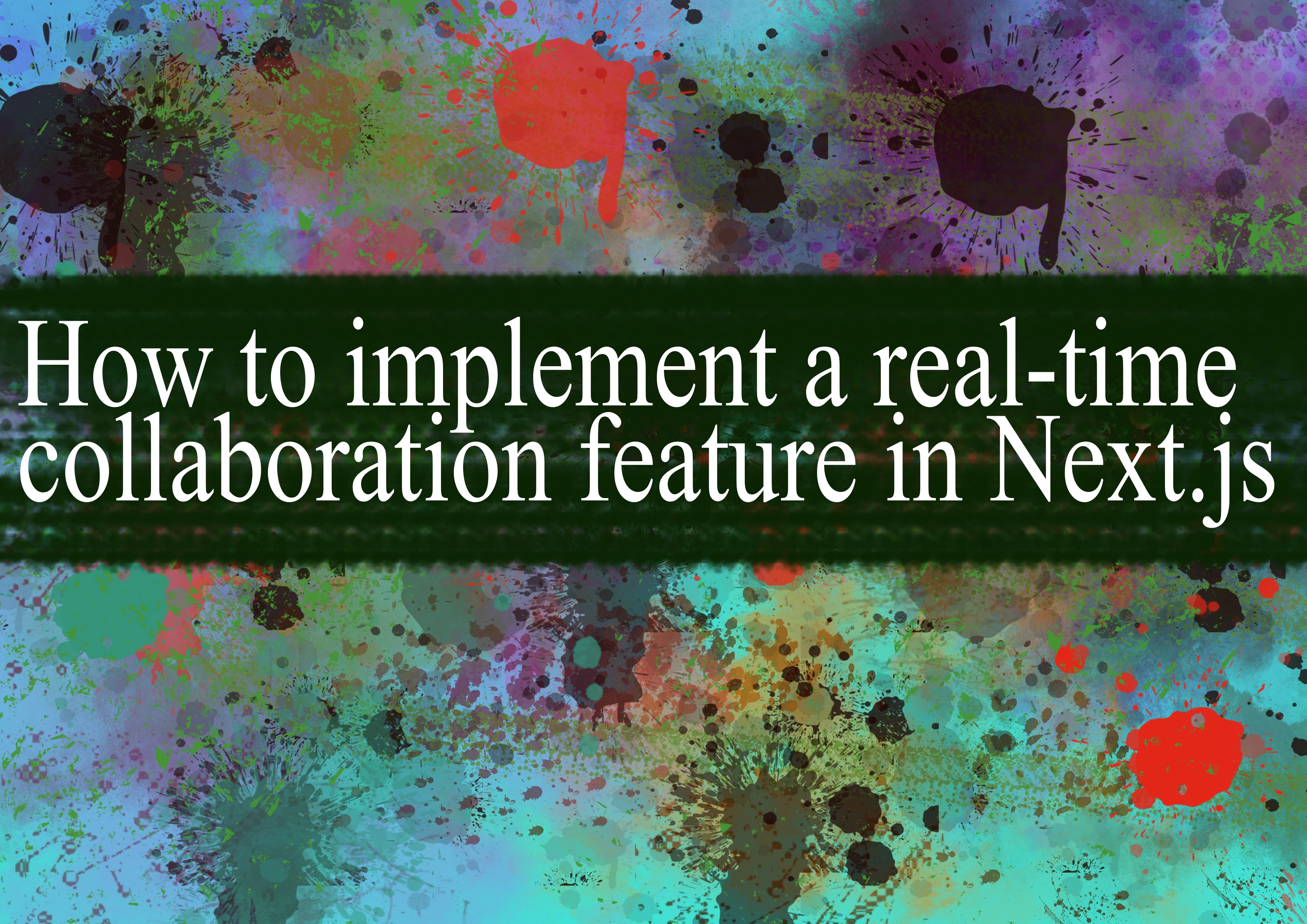How to implement a real-time collaboration feature in Next.js

Implementing a real-time collaboration feature in a Next.js application involves using technologies that allow for real-time communication between clients. One common approach is to use WebSocket technology for real-time bidirectional communication. Here's a step-by-step guide on how you can implement a real-time collaboration feature in Next.js:
Step 1: Set Up a Next.js Project
If you haven't already, create a new Next.js project:
bashnpx create-next-app my-realtime-app
cd my-realtime-app
Step 2: Install Dependencies
Install the necessary packages for WebSocket communication. For this example, we'll use socket.io for WebSocket handling:
bashnpm install socket.io socket.io-client
Step 3: Create WebSocket Server
Create a server file (e.g., server.js) to handle WebSocket connections:
javascript// server.js
const http = require('http');
const { Server } = require('socket.io');
const server = http.createServer();
const io = new Server(server);
io.on('connection', (socket) => {
console.log('User connected');
// Handle collaboration events here
socket.on('updateContent', (data) => {
// Broadcast the updated content to all connected clients
io.emit('updateContent', data);
});
socket.on('disconnect', () => {
console.log('User disconnected');
});
});
const PORT = process.env.PORT || 3001;
server.listen(PORT, () => {
console.log(`Server listening on port ${PORT}`);
});
Step 4: Integrate WebSocket Server with Next.js
Modify your package.json to run the Next.js application and the WebSocket server:
json"scripts": {
"dev": "next dev",
"start": "node server.js"
}
Step 5: Create a Next.js Page
Create a new page (e.g., pages/index.js) for your real-time collaboration feature:
javascript// pages/index.js
import { useEffect, useState } from 'react';
import io from 'socket.io-client';
export default function Home() {
const [content, setContent] = useState('');
const socket = io();
useEffect(() => {
// Connect to the WebSocket server
socket.on('connect', () => {
console.log('Connected to server');
});
// Listen for content updates from the server
socket.on('updateContent', (data) => {
setContent(data);
});
return () => {
// Disconnect from the WebSocket server when the component is unmounted
socket.disconnect();
};
}, []);
const handleContentChange = (event) => {
const newContent = event.target.value;
// Send the updated content to the server
socket.emit('updateContent', newContent);
};
return (
<div>
<textarea value={content} onChange={handleContentChange} />
<p>Collaborative Content:</p>
<div>{content}</div>
</div>
);
}
Step 6: Run Your Application
Start both the Next.js application and the WebSocket server:
bashnpm run dev # Start Next.js in development mode
npm start # Start the WebSocket server
Visit http://localhost:3000 in your browser and open it in multiple tabs to see real-time collaboration in action.
This is a basic example, and you may need to handle authentication, security, and other considerations based on your application requirements. Additionally, consider deploying your WebSocket server separately from your Next.js application in a production environment.
-
Popular Post
- How to optimize for Google's About This Result feature for local businesses
- How to implement multi-language support in an Express.js application
- How to handle and optimize for changes in mobile search behavior
- How to handle CORS in a Node.js application
- How to use Vue.js with a UI framework (e.g., Vuetify, Element UI)
- How to configure Laravel Telescope for monitoring and profiling API requests
- How to create a command-line tool using the Commander.js library in Node.js
- How to implement code splitting in a React.js application
- How to use the AWS SDK for Node.js to interact with various AWS services
- How to use the Node.js Stream API for efficient data processing
- How to implement a cookie parser middleware in Node.js
- How to implement WebSockets for real-time communication in React
-
Latest Post
- How to implement a dynamic form with dynamic field styling based on user input in Next.js
- How to create a custom hook for handling user interactions with the browser's device motion in Next.js
- How to create a custom hook for handling user interactions with the browser's battery status in Next.js
- How to implement a dynamic form with dynamic field visibility based on user input in Next.js
- How to implement a dynamic form with real-time collaboration features in Next.js
- How to create a custom hook for handling user interactions with the browser's media devices in Next.js
- How to use the useSWRInfinite hook for paginating data with a custom loading indicator in Next.js
- How to create a custom hook for handling user interactions with the browser's network status in Next.js
- How to create a custom hook for handling user interactions with the browser's location in Next.js
- How to implement a dynamic form with multi-language support in Next.js
- How to create a custom hook for handling user interactions with the browser's ambient light sensor in Next.js
- How to use the useHover hook for creating interactive image zoom effects in Next.js